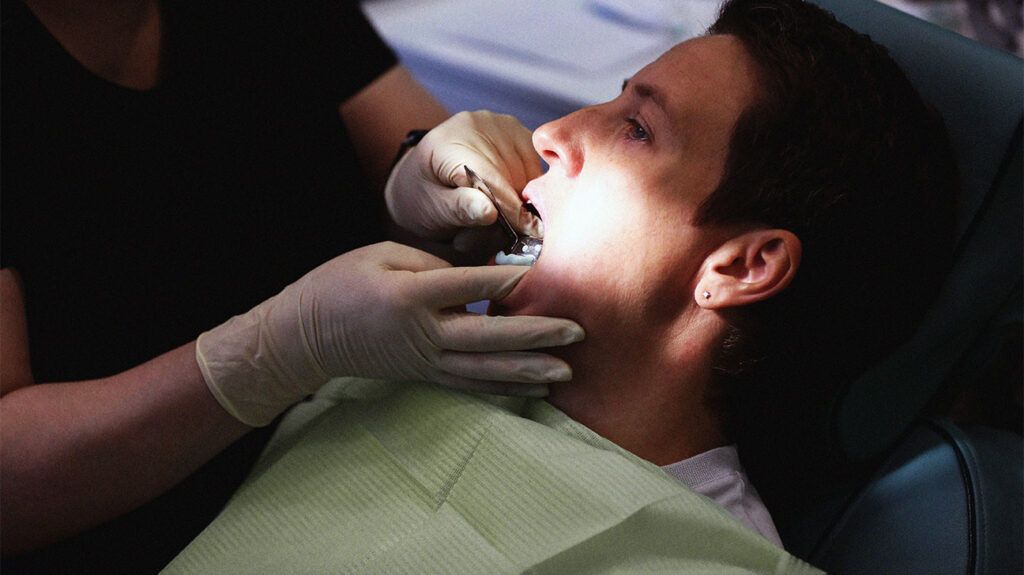Dry socket is the common name for alveolar osteitis, inflammation within an empty tooth socket. To prevent it after a tooth extraction, people should avoid smoking, alcohol, and suction.
In this article, we explain what causes dry socket and how a person can prevent it. We also cover how to care for the mouth after a tooth extraction and when to see a dentist.

After a tooth extraction, a blood clot usually forms over the tooth socket. This blood clot protects the nerve endings in the bone and is a normal part of the healing process.
However, in some cases, the blood clot either fails to form or becomes dislodged. As a result, the bone and nerves in the socket become exposed. Dry socket is delayed healing, and it can be very painful.
According to a
A person should avoid doing anything that might disturb the blood clot after the tooth extraction. People should avoid the following:
- Creating suction: Smoking and drinking through a straw can create suction. These activities could loosen the clot and delay healing.
- Smoking: Smoking delays healing and also increases blood pressure, which can lead to more bleeding.
- Vigorous mouth rinsing: People should take care not to rinse their mouth too vigorously. Rinsing the mouth is possible after a tooth extraction, but it is important to do it gently to avoid disturbing the blood clot.
- Alcohol: A person should avoid alcoholic beverages or mouthwash containing alcohol for at least 24 hours to reduce the likelihood of the clot becoming dislodged. Alcohol can encourage extra bleeding and delay healing.
- Physical activity: People should limit strenuous activity for the first 24 hours after the extraction to reduce bleeding and help the blood clot form.
Tooth extraction aftercare
It is important to follow the dentist’s aftercare instructions regarding how to take care of the extraction site, as this will lead to a better outcome.
If a person has any questions that the instructions do not cover, they should ask the dentist. The specific instructions may vary among dentists, but they are likely to include the following:
- Do not spit or use a straw for 24 hours following a tooth extraction.
- Avoid chewing on the side of the mouth where the extraction took place to minimize the chance of dislodging the blood clot.
- Do not smoke for at least 24 hours, ideally 48 hours, after an extraction.
- Choose soft foods rather than hard or crunchy foods, as this can reduce the risk of damaging the socket and getting food stuck in it.
- Refrain from drinking carbonated or hot drinks, as both of these could cause displacement of the blood clot from the socket.
Learn more about tooth extraction aftercare here.
How to clean the mouth
To maintain good oral hygiene following a tooth extraction, people should continue to clean their other teeth as usual.
After the initial healing period, a warm water rinse can help to keep the tooth extraction site clean without direct physical impaction.
A person who has had a tooth extraction will feel discomfort, such as swelling and soreness. However, if the pain worsens or improves but returns a few days later, it may be due to a dry socket.
Other possible symptoms include:
- blood clot missing from the socket
- an aching or throbbing pain in a person’s gum or jaw, which can be intense and resemble that of severe toothache
- an unpleasant smell from the empty socket
- a bad taste coming from the socket
- pain that radiates to the rest of a person’s face
Additionally, there could be exposed bone at the site of the extraction.
Potential treatment options may include:
- irrigating the extraction site to remove food and debris
- taking medication to help with the pain, such as nonsteroidal anti-inflammatory drugs (NSAIDs), which include ibuprofen
- dentists can pack the extraction site with zinc oxide-eugenol paste to help
reduce pain - dentists can also place a medicated dressing over the socket to protect it until it heals
If a person thinks that they may have a dry socket, they should make an appointment with their dentist. Treatment will help relieve pain and promote faster healing.
The dentist can also ensure the pain is not due to an infection instead of dry socket. An infection can lead to more serious issues, and it may spread into the bone, causing severe swelling. If this occurs, a person will require oral or even intravenous antibiotics to tackle the infection.
A person should see a dentist if they experience any of the following after a tooth removal:
Dry socket is a painful condition that can occur after a tooth extraction.
People should follow their dentist’s aftercare instructions to minimize the risk of developing dry socket.
The dentist is likely to advise the person to avoid smoking, using straws, eating hard foods, and rinsing the mouth too vigorously.
If pain around the extraction site worsens or does not improve in time, a person should see a dentist for treatment.
